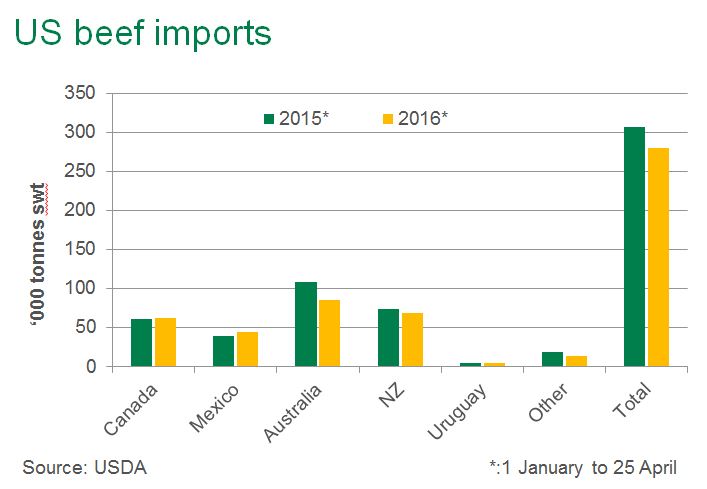US beef cold stores subside, pork and poultry increase
US red meat and poultry cold store volumes for April were released earlier in the week and indicated plentiful supplies, with a decline in beef volumes offset by higher pork and poultry.
Beef cold store volumes were down 3% from the previous month and 7% year-on-year, at 452.3 million lbs (205,159 tonnes). This is encouraging considering US beef production is actually up 5% year-on-year for the first quarter (January to March), at 2.7 million tonnes cwt (USDA).
However, offsetting the higher US beef production was a notable decline in imported beef for the year-to-date (latest data 25 April 2016), with shipments down 9% year-on-year, at 279,312 tonnes swt. The largest decline was from Australia, where imports are down 21% (at 85,052 tonnes swt) compared to the same time as last year, with significantly lower beef production and weaker prices the two key constraining factors. US imports of New Zealand (NZ) beef were also significantly lower for the same time frame, down 7% year-on-year, at 28,828 tonnes swt.

The combination of lower Australian and NZ production with the commencement of the US grilling season (typically higher consumption), should assist US beef cold stores remaining below year-ago levels for the coming months.
Moving away from beef, and offsetting its decline, was a 3.5% month-on-month increase in pork stores in April, at 635.4 million lbs (288,212 tonnes). According to Steiner Consulting Group, a rise at this time of year is common and it should be noted that despite the monthly rise, volumes in store were 9% below the same time last year.
Causing some concern though is the backlog of chicken inventories which remain at burdensome levels. April US chicken stores were 806.1 million lbs (365,640 tonnes), up 5% from year-ago levels and 22% from the five-year average, mostly accounted for by particularly high breast and wing inventories. The inevitable price drops required to reduce these levels could have a negative impact on clearing beef stocks.



